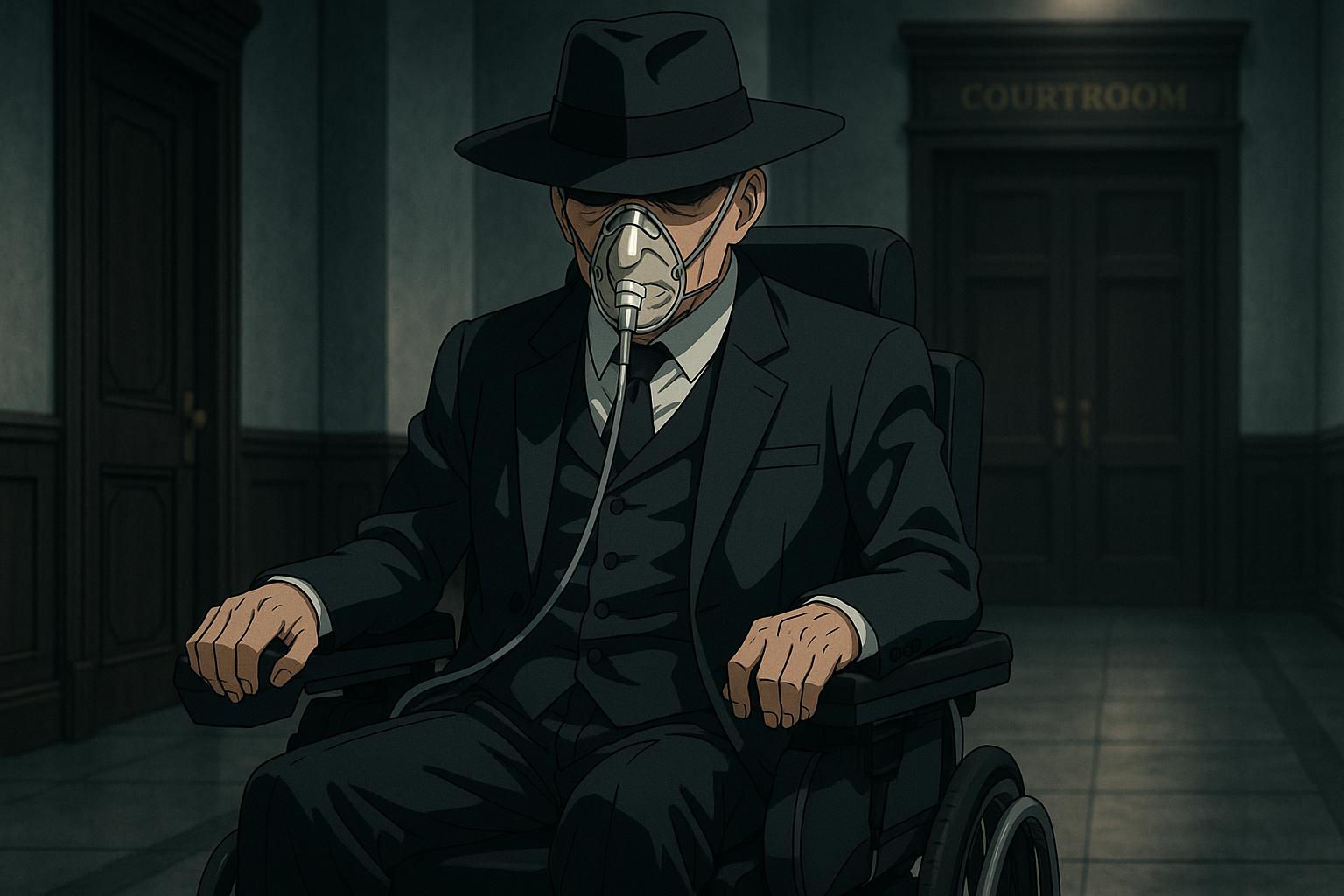In February 2022, I encountered Nicholas Rossi, who insists on being called Arthur Knight, in the corridors of the Edinburgh Sheriff Court. Clad in a tailored three-piece suit and sporting a broad-brimmed hat, the figure before me was seated in an electric wheelchair, his raspy voice buoyed by an oxygen mask declaring the extradition accusations against him a grave misunderstanding. This scene was emblematic of a tumultuous saga that has attracted widespread attention, marked by confusion, claims of mistaken identity, and serious allegations of sexual assault.
Rossi, a man in his mid-thirties, is embroiled in a protracted legal battle regarding allegations of rape in the U.S., specifically in Utah. He has been charged with two counts of rape, with accusations that he fled to the UK to evade prosecution after faking his own death. Onlookers may recall his controversial narrative of being an innocent victim, claiming his activism in Rhode Island's foster care system had prompted threats against his life, necessitating the drastic measures he took to escape. Despite these assertions, the courts have viewed him as a significant flight risk, especially after he unsuccessfully sought to have his bail reduced in a recent hearing.
In 2021, Rossi was arrested in Glasgow after falling ill with COVID-19. It was during this hospital stay that authorities recognised him, identifying him through distinctive tattoos previously circulated by Interpol. The subsequent ruling by judge Norman McFadyen, confirming his identity as Nicholas Rossi, was based on compelling evidence, including fingerprints. The court's findings led to significant scrutiny on Rossi's claims of being an Irish orphan who had never set foot in the U.S., a narrative he had steadfastly maintained throughout the legal proceedings.
Rossi's public persona has often seemed performative, a stark contrast to the gravity of the allegations he faces. In court, he has been observed trying to project an image of a resilient survivor, yet the overwhelming evidence against him has rendered his claims increasingly dubious in the eyes of the law. As stated during his trial, Rossi argued vehemently against being identified as the fugitive sought by American authorities, insisting his existence as Arthur Knight is legitimate. However, the courts, and indeed many observers, dispute this narrative, suggesting that his attempts to deflect the truth only serve to muddy the waters of an already complicated legal process.
On October 5, 2023, the Scottish ministers confirmed his extradition to the U.S., signalling the end of a long and contentious battle that has captivated both the media and public interest. Rossi’s claims of mistaken identity have continuously met with resistance, as courts have ruled against him repeatedly. To date, the evidence presented has firmly placed him as a wanted man, armed with the dubious distinction of having created an elaborate narrative to escape the scrutiny of his past.
The ongoing investigation into Rossi's activities not only sheds light on his questionable identity but also raises broader questions regarding the legal systems in both Scotland and the U.S., particularly concerning how fugitives can manipulate their identities to evade justice. As this case continues to unfold, it serves as a potent reminder of the complexities involved in international law and extradition processes, particularly involving serious allegations such as those facing Rossi.
In exploring the layers of this extraordinary case, a new podcast series within the Strange But True Crime framework has been launched, further dissecting the various elements of Rossi’s story. It promises to offer a nuanced examination of the interplay between media representation and legal realities in high-profile criminal cases.
As the judicial proceedings advance, the pressing question remains: will Nicholas Rossi’s desperate bid to uphold his fabricated identity succeed against the mounting evidence, or will the truth finally prevail in the courts of law?
Reference Map:
- Paragraph 1: [1]
- Paragraph 2: [2], [5]
- Paragraph 3: [3], [6]
- Paragraph 4: [4], [7]
- Paragraph 5: [1]
- Paragraph 6: [5]
- Paragraph 7: [6]
Source: Noah Wire Services
